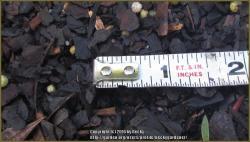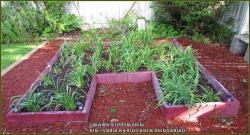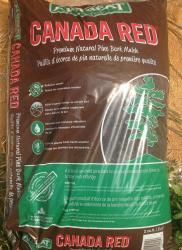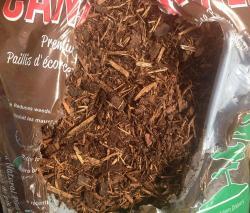Here are some photos for comparison.
Pine Fines (1 year old raised bed):
Close-up photo:

Photo showing the pine fines planting medium that one of the daylilies in this bed is planted in:

And I also have red dyed mulch (shredded mulch actually) around the outside of that raised bed:

And here is a photo of the entire bed surround by the red dyed mulch. The green on the ground is fallen leaves, not weeds growing in the red mulch. We had a lot of rain and gusty winds were recently. :

And this is my worm compost bin and the compost they produce:

I add 1 handful of some worm compost to every hole before adding a plant. I swear by worm compost to prevent transplant shock. And yes! I grow my own worms (which I originally purchased online as "red wigglers"). I stopped using commercial bagged compost because I noticed that it was killing my plants. Home grown compost is the only way to go!!!






